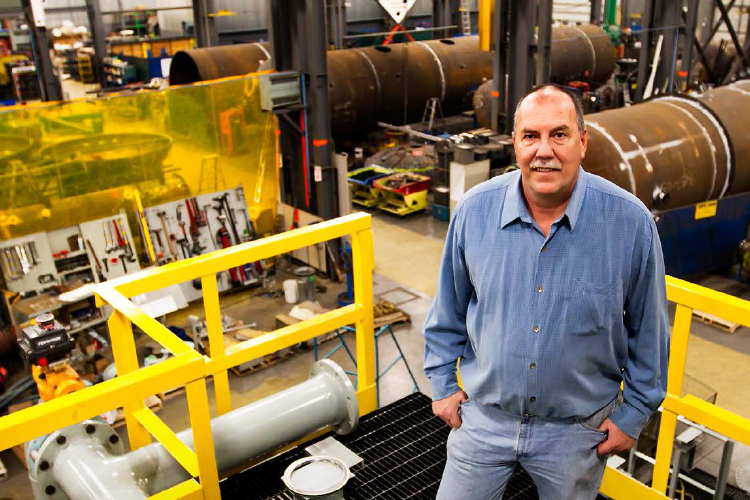While it’s easy to focus on the facility, the real DNA of Plains Fabrication is their people.
“I think the difference, and it’s still true today, is our collaborative and team approach to getting things done,” Nagy explains. “Our people work together for the greater good. Plains is the people who work here. At last count we have 39 or 40 people who’ve been here more than 10 years. And there’s a number of people on the shop floor that have been here since the start, 28 years ago.”
Plains Business Development Manager Herb Hammer concurs.
“From the leadership to the shop floor, there are people who’ve been here since day one – something very unusual in the oil and gas industry where workers can be enticed away for another dollar or two an hour,” Hammer adds. “Once people start work here, they stay.”
The company actively promotes from within, encouraging and supporting the professional growth of their employees. Plains removes the barriers between the shop floor and management, embracing the open concept workspace to improve interaction and collaboration. As a result, Plains’ staff operates with the passion of a team. This collaborative partnership within the company leads to efficient work flow, productive environment, mindful innovation and a culture of continuous improvement that benefits their customers.
The collaboration doesn’t end at the front door, either. Plains actively shares its best practices and innovations with other manufacturers – even competitors – while continually pursuing new insights from industry partners. Similarly, Plains extends the teamwork approach to their clients.
“We like to sit down with suppliers, engineering firms, and our customers early on in the process,” explains Hammer. “We work together to make it easier to fabricate the product they have designed. The easier the fabrication process, the less time it takes and the more money we can save for the client.”
“After 28 years we’re still looking for new and better ways to do things,” adds Nagy.










